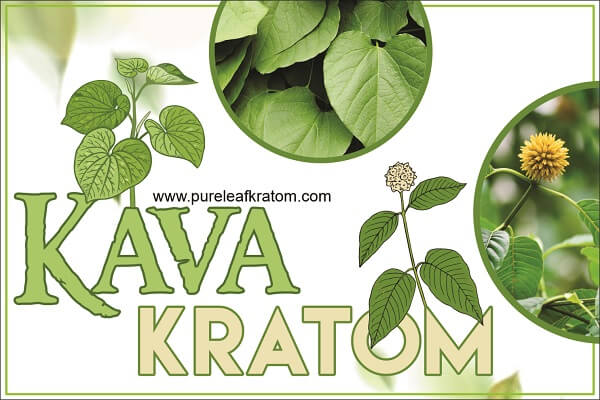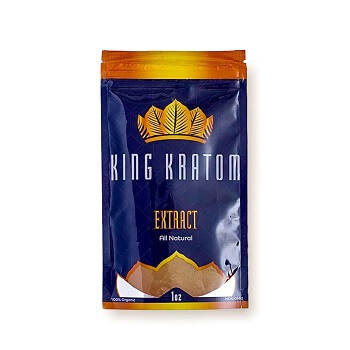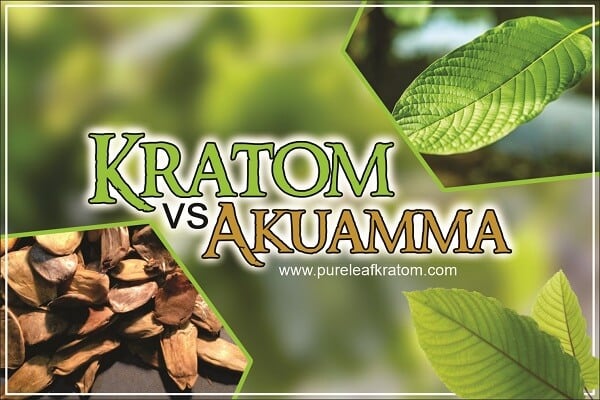
Kava And Kratom: How They Differ From Each Other?
In the realm of botanicals, Kava and Kratom usually go side by side. These natural plant extracts are often used to get similar influences and in similar settings. However, despite their similarities, certain differences between Kratom and Kava are important to consider.
Kava and Kratom are increasingly being offered together at bars and online outlets. While they might share a name and a similar appearance, in reality, they are worlds apart.
In this article, we'll look at some of the differences and explain why you must distinguish between the two. Everything you need to know about Kava and Kratom, two natural herbs, is provided, from their origins to the most often used consumption methods.
Kava: What Is It?
Kava is derived from the roots of the Kava plant. The plant is native to Fiji and Indonesia and belongs to the pepper family. People in the native area use the root of this plant to make various teas and beverages.
Some restaurants and bars use it with either water or coconut milk to make social or recreational cocktails. Kava is also used in religious ceremonies.
 Click Here Shop Premium Bumble Bee Kratom Powder Red Borneo Online
Click Here Shop Premium Bumble Bee Kratom Powder Red Borneo Online
Popular Kava Forms
Kavalactones, which make up the chemotype of the Kava powder, are the basis for the various types of Kavas. It is categorized as either heady, heavy, or balanced according to its chemical makeup.
- Heady Kava
Kavas tend to have a more heady/cerebral, uplifted, and joyous influence when they contain higher concentrations of kavalactones, such as kavain and yangonin (often those with numbers 4 and 3 closer to the left of their chemotype). Many users prefer to take heady kavas in the daytime. - Heavy Kava
It is another important and frequently consumed strain of Kava. Heavy Kava has a slightly more bitter taste and a stronger outcome than other potent kavas. Most users consume this type of kava at night. - Balanced Kava
These are the most versatile and well-liked kavas. The regular users suggest it as excellent for both novice and seasoned drinkers who appreciate the entire spectrum of lovely kava influence. They take it both in the daytime and at night.
What Exactly Kratom Is?
Kratom belongs to a tropical, evergreen tree in the coffee family. It is scientifically named Mitragyna Speciosa and is indigenous to Southeast Asia (Thailand, Malaysia, Indonesia, Borneo, and other surrounding countries), where it has been a part of traditional culture for thousands of years. It is available in different forms, such as powders, capsules, teas, dried leaves, tinctures, candies, etc.
Some Well-Known Kratom Strains
The strain and dosage of Kratom users determine the outcomes. Red vein, white vein, and green vein Kratom are the three primary strains of this botanical. Each has distinctive features and qualities which make them popular among its users. Let's take a closer look.
- White Vein Kratom
When the leaves of the Mitragyna tree are still young, and the veins are white, White Vein Kratom is collected (similarly to how white teas are harvested from younger tea leaves). The leaves are completely dried indoors without any light after harvesting.
White Vein Kratom has the greatest mitragynine content of any strain due to its early harvesting (except for Maeng Da). These Kratom strains carry a good potency level; therefore, both newbies and regular users like to ingest white-veined Speciosa. - Green Vein Kratom
When it comes to potency and fruitful outcomes, green vein Mitragyna falls between white and red strains. It has a milder stimulant aroma than the white vein strain and is picked in the middle of the maturity cycle.
Usually, new Kratom consumers prefer taking green-veined Mitragyna. - Red Vein Kratom
The most well-known of the three Kratom strains is a red vein. It is taken from the oldest Speciosa trees and has the greatest 7-hydroxy mitragynine contents.
This is the most potent strain and is harvested when the tree leaves become fully mature. The greater potency of red-veined Speciosa attracts experienced users to get the most out of their dosage.
What Makes Kava And Kratom Different from Each Other?
You might get confused between Kava and Kratom, as it normally seems the same. There are many differences among them. The most significant distinctions between these well-known botanicals are outlined below.
- Heritage
As aforementioned, Kava and Kratom come from two different regions: Kava from the Western Pacific region and Speciosa from Southeast Asia. Both have cultural significance, but the motives for consumption and usage differ. Kava is employed in ceremonial practices, whereas Mitragyna Speciosa is not popularly used in religious ceremonies. - Strains
When it comes to strains, Kava and Kratom are very similar. Both are distinguished by the region in which they flourish rather than by genetic distinctions. The color of the veins distinguishes Speciosa strains. The area where the Korth developed and the color of the veins are commonly used to distinguish distinct Kratom types. The most popular strains of Kratom are red vein, white vein, and green vein. Kava, unlike Mitragyna, is normally identified by its color. For example, black kava is a well-known Hawaiian Kratom strain. The other most important strains of Kava are heavy, heady, and balanced, as stated earlier. - Origins
Kratom and Kava are both tropical plants that flourish in hot climates. Kava is native to the Pacific islands of Vanuatu, Fiji, Samoa, Tonga, Papua New Guinea, and Hawaii, whereas Kratom is a plant that grows in the lush tropical jungles of Indonesia, Thailand, Bali, Brunei, Borneo, and other Southeast Asian countries. - Legality
The legal status of Kava and Kratom is another factor that makes these plants different from each other. Kava is legal in every state of the United States, whereas Speciosa consumption is forbidden in some states, including Arkansas, Alabama, Tennessee, Wisconsin, Indiana, and Vermont. These states have endorsed the FDA and DEA statements. These official bodies have made a couple of attempts to ban Kratom by claiming that two of its major alkaloid components - mitragynine and 7-hydroxy-mitragynine - are not safe for human consumption. In fact, they are unable to prove it with any medical evidence.
Conclusion
In a nutshell, it's very important not to rush to Kava from Korth and vice versa, as they both seem similar. There are significant points that highlight the differences between Kava and Kratom.
Kava, a member of the pepper family, is legal all over the United States, whereas a member of the coffee family named Speciosa is still forbidden in some states of the US.
Many users suggest that it's crucial to avoid combining the two plants into a single dose. To get a balanced, fruitful outcome, mix Kratom and Kava and take the combo at different parts of your day.
Undoubtedly, it is evident that both herbs are getting more popular day by day. So if you are more likely to shift or consume both at the same time or want to replace them with one another, it's good to consult your family doctors. As they will guide you in more detail, keeping in view your health concerns and medical history.
Frequently Asked Question
Q: What is the half-life of Mitragyna?
A: The half-life of this botanical is mostly dose-dependent. Larger doses of this herb will have a long-lasting influence that may persist for a few hours. Similarly, shorter doses last for a shorter period.
Q: How long does Kava stay in your system?
A: Kava users claim that Kava's influence normally persists for a few hours. The kavalactones are the kava's significant components and have nearly a few hours of half-life.
Q: What are the similarities between Kava and Kratom?
A: Both Kava and Kratom are planted; Kava originates from the plant's root, while Kratom comes from the plant's leaves. Both of these plants are ground into tea and taken on different gatherings. Similarly, both of them are available in the form of powder.





